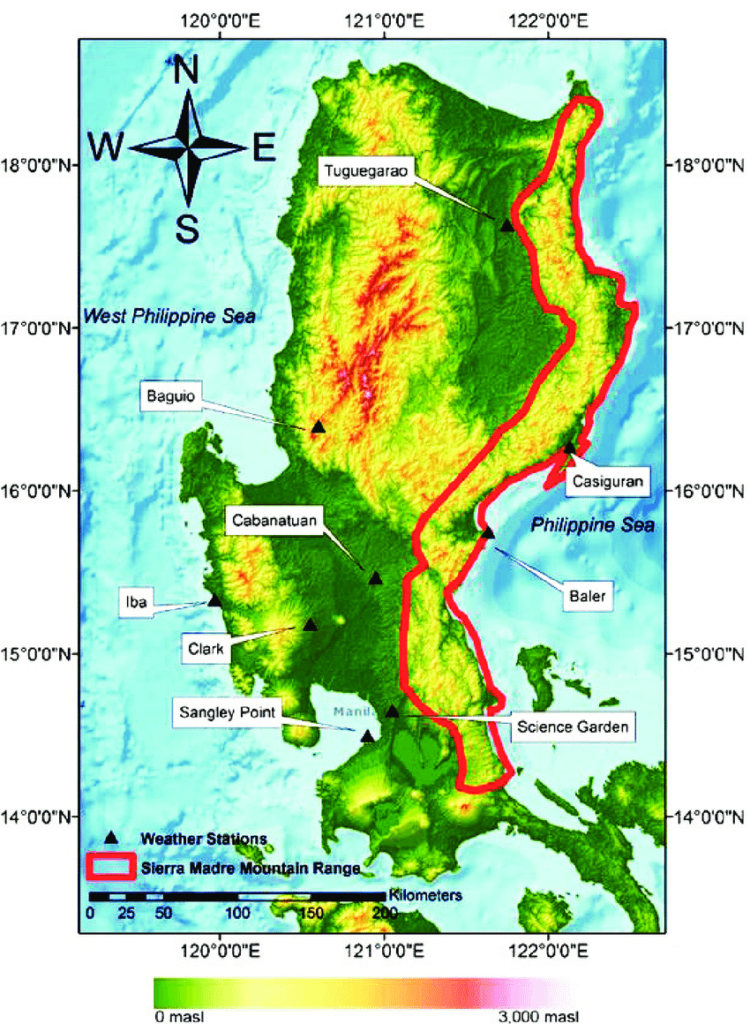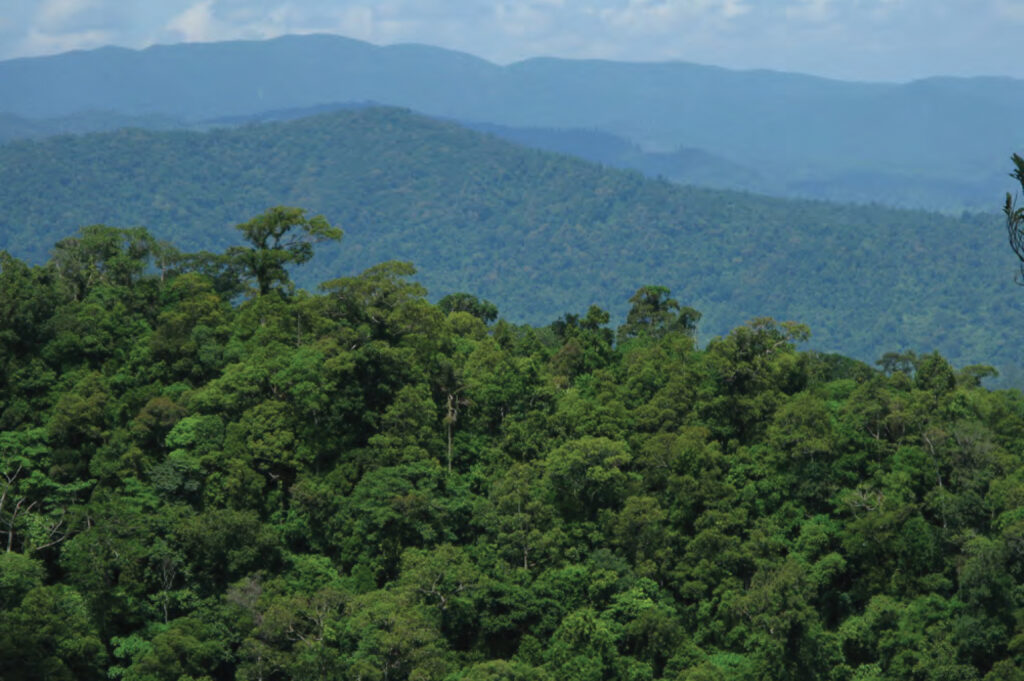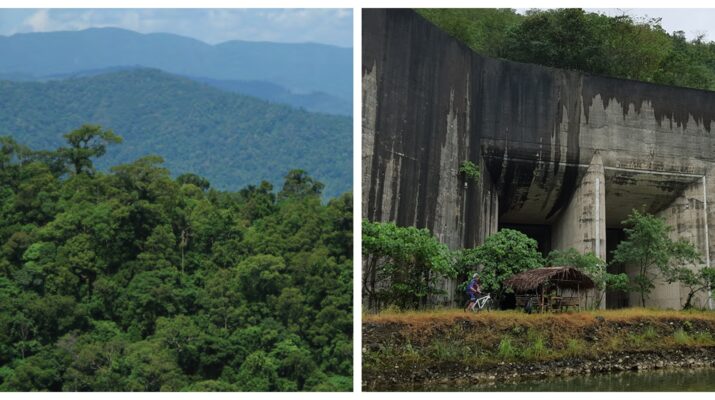As Typhoon Ulysses lashes the country, more Filipinos have come to appreciate the Sierra Madre mountain range.
Spanning over 540 kilometres, it is the country’s longest mountain range. The length of the Sierra Madre extends from Cagayan province in the north to Quezon province in the south, encompassing a combined population of 50 million people.
Not only is it home to a diverse range of flora and fauna, including the endangered Philippine eagle, but this land formation also serves a critical purpose in disaster risk reduction.
The towering nature of the Sierra Madre and its location on the outer edges of Luzon act as a barrier to incoming typhoons from the Pacific. These mountain ranges absorb the worst of incoming typhoons, weakening them before they hit towns and cities nearby.
In 2018, the mountain range stifled what was considered the strongest typhoon of that year. Typhoon Ompong (international name Mangkhut) was expected to bring sustained winds of 220 kilometres per hour, but after encountering the mighty Sierra Madre it slowed down to 160 kilometres per hour before hitting civilian communities.

The Philippines is located in the outer rim of the Pacific Ocean, near the equator, and thus a hotbed for extreme weather events.
With poor infrastructure and a disorganised disaster response system, the country constantly suffers from high casualties and severe collateral damage from storms.
Which is why the Sierra Madre mountain range is so crucial to its future – this natural land formation will both save lives and infrastructure. But despite its obvious importance, the Sierra Madre is under threat from human activity.
For one, illegal logging is causing rapid deforestation of the mountain range’s once thick forests. In 2010, the Department of Environment and Natural Resources (DENR) recorded a total loss of 161,240 hectares of forest from 1988 – this was mostly attributed to illegal logging.
Major threats to the Sierra Madre also include mining and urban development – such as the construction of roads – in the mountain range.
However, these human activities are minuscule compared to the potential threat the proposed Kaliwa Dam imposes on the Sierra Madre.
The Php18.7 billion dam project was first conceptualised during the era of President Ferdinand Marcos. It was revived under the Duterte administration after Manila suffered a severe water shortage in 2019.
President Rodrigo Duterte himself pushed for the completion of the dam, endorsing it as a means to ensure better water supply to the ever-growing Greater Manila region. His goal inched closer to fruition after his government secured a US$211 million loan from China.
It is a project that will be costly to the Filipino people, not because the loan deal with China “onerous”, but constructing the dam will also lead to the ruin of the Sierra Madre mountain range.
This large-scale project will be built within the Kaliwa watershed forest reserve which was declared as a forest reserve in 1969 under Proclamation 573. Less than a decade later in 1977, the same area was designated as a National Park and Wildlife Sanctuary under Proclamation 1636.
These pronouncements recognise the ecological significance of the Kaliwa Watershed. Constructing the dam violates the protected status of the area, it would endanger the flora and fauna that inhabit it and also risks contaminating the water quality of the watershed.
The Haribon Foundation – a conservation group that caters to the survival of the Philippine eagle – said the construction of the dam will “ravage the homes of thousands of threatened wildlife species” in the Sierra Madre, including of the rare bird.
Building the dam will also affect indigenous communities who have called the Sierra Madre their home for generations. The Dumagat-Remontado have ancestral domain claims in the area where the Kaliwa dam will be located, its construction will mean flooding the lands their ancestors once lived in.
When the dam inundates their communities in the provinces of Quezon and Rizal, the Dumagats expect as many as 14,000 households will be displaced and in need of new housing.
The group is no stranger to the existential threat the Kaliwa dam imposes on their ancestral lands, they already defeated a similar proposal in 2009 under then-President Gloria Macapagal-Arroyo. But now they face the same problem under President Duterte who is determined to see the project completed.
In March 2019, his Finance Secretary Carlos Dominguez III even called to expedite the project without any thoughts spared for the plight of the Dumagat-Remontados.

After the country was smashed by four straight typhoons in as many weeks, the Philippine government should recognise the importance of the Sierra Madre mountain range.
Two of those recent typhoons – Rolly and Ulysses – were both shown to have weakened after encountering the Sierra Madre. Seeing how badly both weather disturbances have affected the country, it is frightening to imagine how worse it could’ve been had the mountain range not been in their path.
This should make us appreciate the Sierra Madre, not set out to destroy it which is what the Kaliwa Dam will do. The infrastructure project will not only ruin the biodiversity already residing inside the Sierra Madre’s forests but will also compromise our country’s ability to deal with typhoons in the future.
If we want to save the Sierra Madre, we must ensure the Kaliwa Dam will never be built.


I have experienced to have been in siera madre mountain when our group went to Dingalan, Aurora and it was a good experience having seen the lush closed forest of the mountain range and i cant help but wonder the biodiversity this forest holds, particularly the various species of trees and wild plants whose worth is beyond human understanding. So, it is only proper and fitting that we save this forest no matter what it costs.
How are we going to do that? if those in the government were blind and deaf. were mute and dumb.
They do recognized the importance of mountain ranges as it is there naturally to protect the lowland from tremendous natural disaster. If human being will be greedy to destroy it then nature will speak later on and who will gain its revenge?
This proposal is diametrically opposed to the real purpose and intent of the KALIWA RIVER DAM PROJECT which is to enhance the forest cover of Sierra Madre to prevent the decommissioning of the DAM in case of destruction of the forest cover of the Sierra Nadre Kaliwa River Watershed.How can the Kaliwa River Dam dam destroy the Sierra Madre Mountain Range in that case when the Dam is only at the level of the RIVER?
Absolutely right.